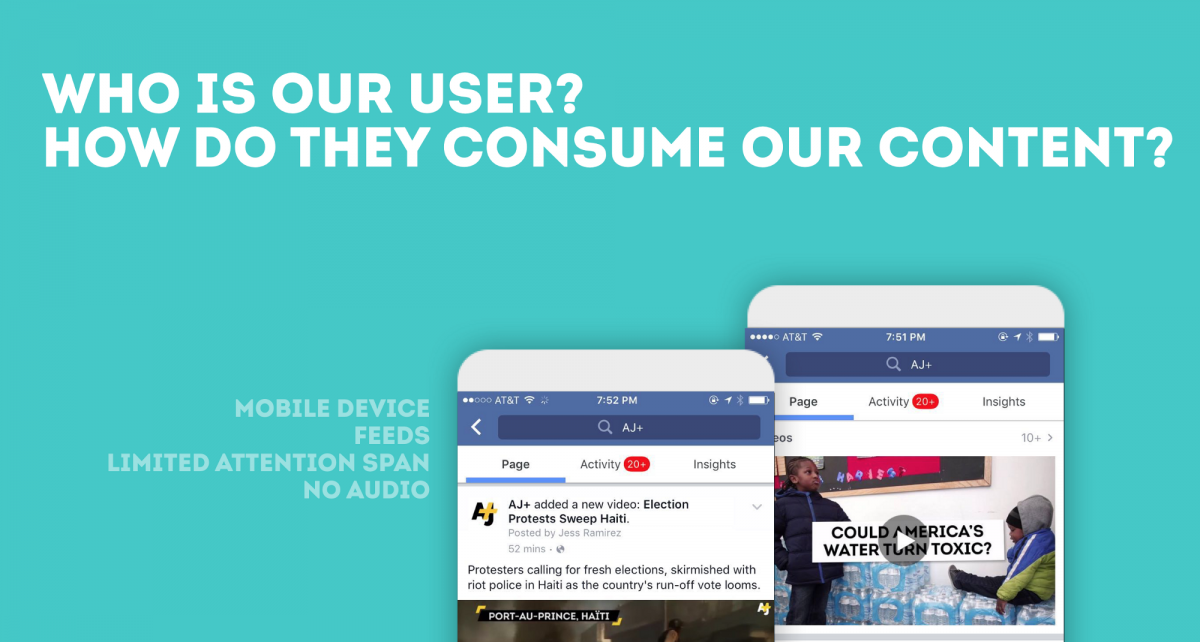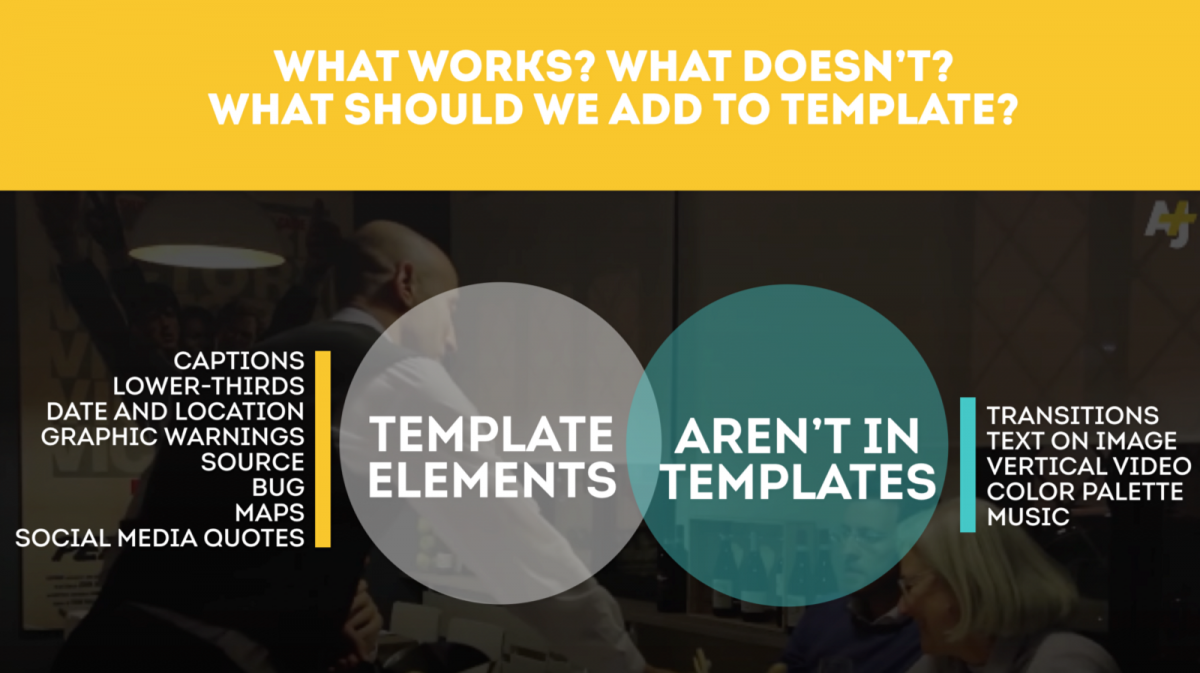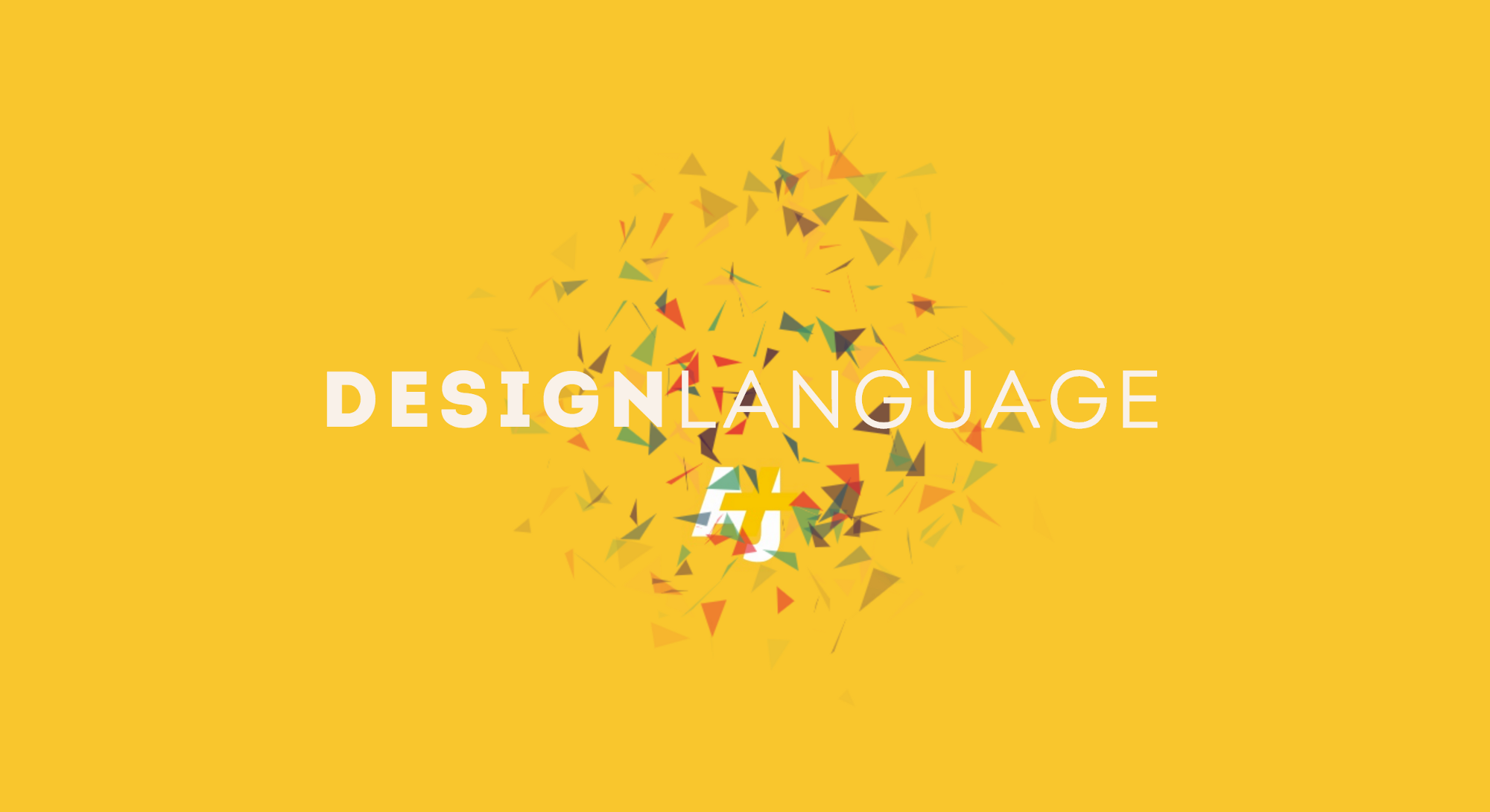How AJ+ leverages user-centered design to win over millennials
Scrolling through Facebook, it’s hard to miss a video presented with bright yellow text, now a trademark style for AJ+. But how are they made? Former AJ+ user experience architect intern Nina Zou shared a recent piece she published on Medium about her time there.
Ever since AJ+ started posting videos in September 2013, it has grown into one of Facebook’s most frequent video publishers, and is dedicated to designing digital news for more than 3 million people every day across its various social platforms.
The third week in March was an especially good one a AJ+. It reached 146 million people, raking in 93 million video views, 35 million engagements (share, comment, reaction) and 108,0000 new page likes.
Shortlisted as one of the world’s best digital news designs by the Society for News Design (SND), AJ+ is growing at lightning speed.
How did we get here?
Optimizing content based on different platforms
“The medium is the message.”
Coined by media critic Marshall McLuhan, this phrase describes the symbolic relationship between medium and message: the medium influences how a message is perceived. Different social media deserve to be treated as different platforms.
Platforms shapes the content.
As UX researchers on the AJ+ platform team, we frequently ask our users one question: “Describe the environment when you consume a video on Facebook/Twitter/Youtube/Apple TV.”

Based on rounds of user testing, AJ+ has shaped the video into three distinct types.
Real-time (RT) video is designed for Facebook and Twitter, ranging from 60 to 90 seconds on average. Content-wise, RT video topics are more time-sensitive. The normal workflow starts from a morning pitch meeting. Real-time producers will be responsible for editing videos, after which they will pass them on to the editors. Real-time has its own unique video user interface. Both captions and titles are an integral part of RT video design.
Context video is a completely different video type. We focus more on explainers and content that can be continue to be relevant for a longer amount of time. Context video’s length is generally longer and its user interface and design is primarily focused on adapting Youtube and Apple TV.
Short Doc is a distinct documentary type where AJ+ unites visual journalists from all over the world to tell in-depth stories.

These are the components which constitute our successful video publishing model. Now we must reflect on how we can optimize user experience on different platforms to foster a loyal audience.
It is time to go beyond views
Step One: Start by knowing yourself
There are two main user groups that interact with the video production template: the production staff and the audience.
They both have distinct user needs.
To an audience, the issues which really matter are brand/voice, consistency, legibility and clarity. The producers, on the other hand, desire a more user-friendly Adobe Premiere template that doesn’t cause any frustration or waste their time.

So, our user research started from shadowing current producers. By communicating with them on their complaints and difficulties, we identified problems that need solving. Parts of the template really frustrate producers and editors. For instance, our lower-thirds animation require producers to count characters before inputing text. Ensuring that producers have efficient tools is important to the template redesign.
To get a sense of how the audience thinks about our video style, we organized a focus group. Our goal is to figure out people’s habit of consuming content on different platforms.
Step Two: Apply user-centered design
We want our users to be involved throughout our new template design process and development. Identifying problems is the first step.
From shadowing experiences, we narrowed down a list of problems we want to address.

Consistency and style are two important factors since they ensure people recognize our brand. This is essential to the value of AJ+ and is key to fostering loyal audiences.
After communicating with our production staff, we found some of the problems can be addressed by refining the template, but for others, we need to them to share their editing experience and make suggestions from a design perspective.
After researching and identifying the problems, we will propose the design options, validate them with users and get to work.
Step Three: Set up our principles.
We selected a few UX (user experience) principles to emphasize video production design.


- How AJ+ leverages user-centered design to win over millennials - September 22, 2016





